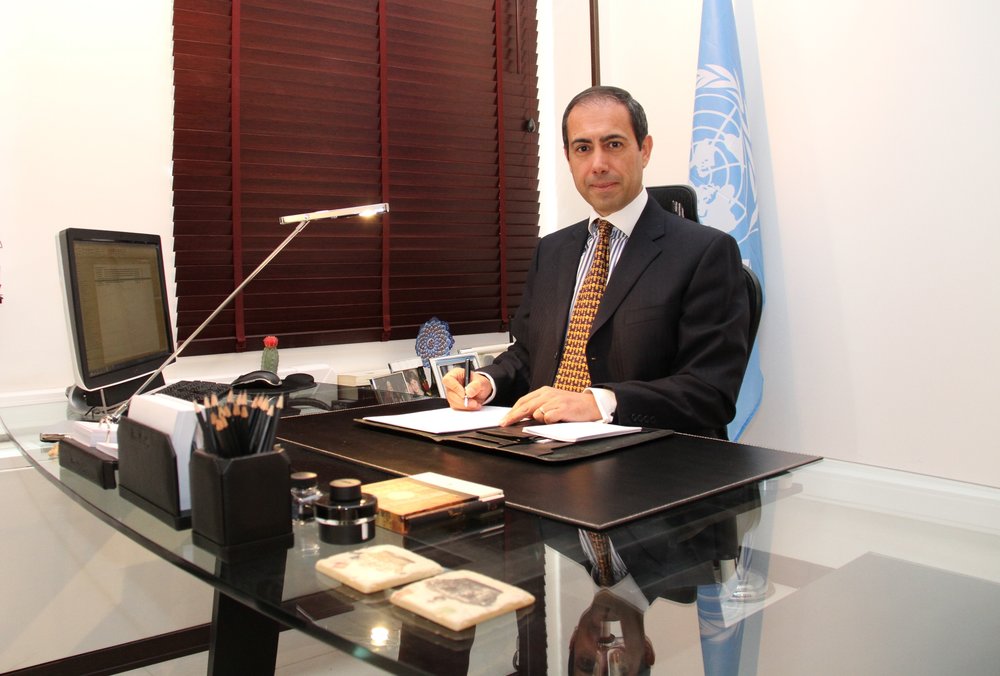Conserving biological diversity to save our environment

During the month of June, we marked the National Environment Week here in Iran. The commemoration of this week provided an opportunity for reflection on the importance of natural resources to all of us both individually and collectively.
Over the coming days I would like to share some of my own reflections on the various aspects as to why the preservation of the environments is critical to the safeguarding of humanity’s fate on earth.
I wish to begin with the subject of biodiversity and its role in preserving life on our planet.
More than 70 percent of the world’s poor live in rural areas and depend directly on biodiversity and ecosystem services for their subsistence.
Biodiversity plays a determinant role in reinforcing food security, sustainable livelihoods and ecosystem resilience, as well as ushering appropriate strategies for climate change mitigation and adaptation, adequate nutritional requirements, insurance for the future and the management of biological processes needed for sustainable agricultural production.
When addressing the issue of food security, however, the principal focus tends to be cast normally on the challenges of increasing food production to meet rising demands. Every so often, a fundamental consideration that tends to be disregarded is that of safeguarding the nation’s biodiversity so as to ensure the sustainability of food security in the longer term.
We need to understand and accept that majority of the current production practices are not sustainable; they damage the environment, undermine the nutritional and health value of foods, lead to reduced function of essential ecosystem services and result in the loss of biodiversity.
If more sustainable practices are to be implemented in order to help maintain the earth’s biodiversity, the current state of agriculture needs to change. Identifying what works in practice, taking into account regional differences and different scales of farming, as well as supporting change will therefore be critical in facilitating how we use diversity to enhance sustainability and food security in the face of change.
Integrated pest management, conservation agriculture, eco-agriculture and organic agriculture are examples of approaches to agricultural production that improve sustainability in a variety of ways that are based on strengthening efficiencies of biological processes and agro-ecosystems, and that are being used over many millions of hectares around the world.
Over the next decades, agricultural practices will need to become increasingly flexible, reflecting the multifunctional nature of agriculture and the need to deal with change and uncertainty. Resilience and adaptability will become more important properties.
Taking into account the envisaged impacts of changes in climatic conditions, there has been a drive advocated by the Food and Agriculture Organization of the United Nations (FAO) towards a paradigm shift in agricultural production that promotes less input-intensive approaches through the embedding of agro-ecological and climate-smart agriculture practices.
In this endeavour, importance is placed on the capitalisation of biological processes and the pursuit of enhanced agricultural production without compromising or adversely affecting natural resources and the environmental capital such as biodiversity and ecosystem services.
When considering that 80 percent of the human diet is provided by plants and only five cereal crops provide more than 60 percent of our daily energy intake, there is no doub that properly managed, conserved and sustainably used biodiversity can deliver critical elements for meeting growing global food demands.
In countries such as the Islamic Republic of Iran where the agricultural sector is comprised by a high proportion of small-scale agriculture, the sustainable use of agricultural biodiversity is likely to be particularly beneficial for small-scale farmers in view of the fact that such farmers are obliged to optimize the limited resources available to them and overcome constrained access to external inputs.
Such successful approaches are likely to bring together positive aspects of sustainable intensification, to reflect the realities of small-scale farmers and to be supported by appropriate policy and economic frameworks.
FAO is actively promoting the conservation and sustainable use of biodiversity for food and agriculture in Iran. The Organization has called for the establishment of a ‘National Information Sharing Mechanism’ (NISM) on plant genetic resources to secure the conservation and sustainable use of plant genetic diversity of the country.
NISM provides an invaluable tool not only to share knowledge and experience on plant genetics, but also to enhance agriculture and thereby ensure that the growing population of Iran will continue to have access to adequate, safe and nutritious food to meet its needs.
When it comes to FAO’s role in biodiversity, the Organization has developed a number of biological diversity related instruments and tools of relevance to food and agriculture that contribute to sustainable development while promoting the integration of its own biodiversity-related instruments for the implementation of the Strategic Plan for Biodiversity 2011–2020.
In this regard, FAO is committed to work in partnership with the Government of the Islamic Republic of Iran, together with other agencies of the UN system as well as other partners from across the wide spectrum of stakeholders, to align our joint efforts so as to achieve sustainable management of biodiversity for food and agriculture for the sake of preserving the well-being of the nation and to strive towards securing a healthy country planet.
